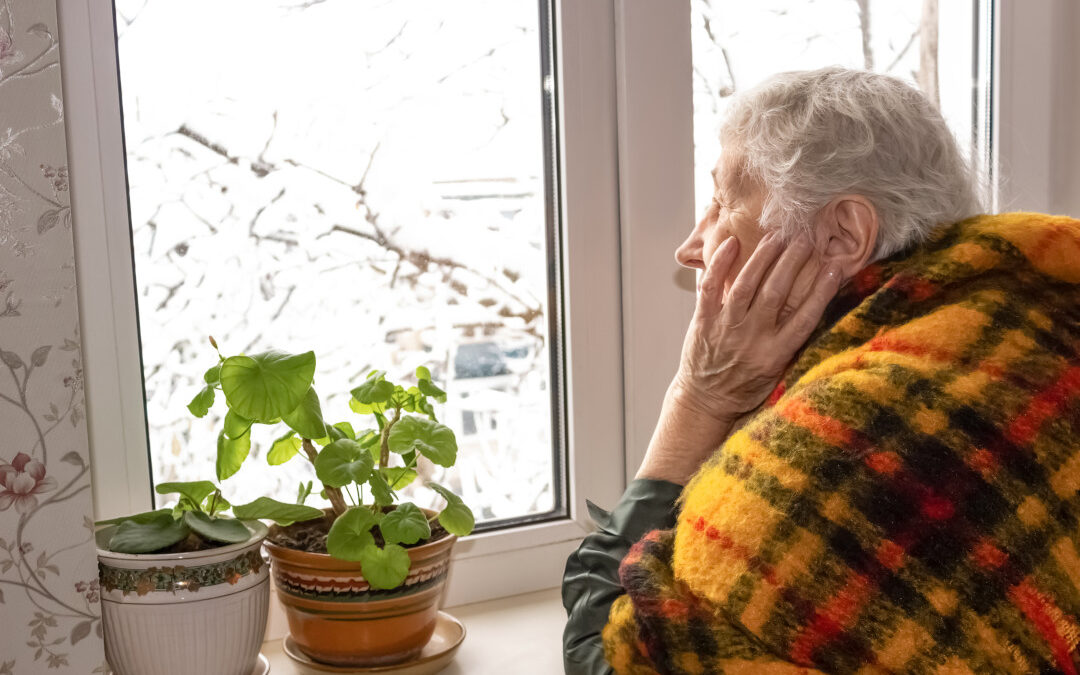If every year around this time you start to feel depressed, it may not be a simple case of the “winter blues.” Did you know that there is an actual clinical condition called Seasonal Affective Disorder (SAD)?While it can affect people of all ages, it can be particularly damaging to the physical and mental health of older adults.
The American Psychiatric Association identifies SAD as Major Depressive Disorder with Seasonal Pattern. The symptoms usually occur during the fall and winter months when there is less sunlight, with the peak for most people in the United States being in January and February. The shorter daylight hours and reduced sunlight causes a shift in their biological clock or circadian rhythm that can cause them to be out of step with their daily schedule. Those who spend little to no time outdoors in the winter are especially susceptible to SAD. Unfortunately, many older adults find themselves in this situation because they dislike going out in the cold or are housebound due to infirmities. This has been compounded this winter because the COVID-19 pandemic has kept many people at home.
Recognizing SAD symptoms
The symptoms of SAD can be overwhelming and can interfere with daily functioning. These symptoms* include:
- Feeling sad or depressed
- Loss of interest in normal activities
- Changes in appetite, including eating more and craving carbohydrates
- Sleeping too much
- Loss of energy and increased fatigue
- Restlessness and an increase in purposeless physical activity such as pacing and handwringing
- Slowed movements or speech
- Feelings of guilt or worthlessness
- Difficulty concentrating or making decisions
- Thoughts of death or suicide
*If you or someone you care about has symptoms of SAD, seek the help of a trained medical professional. It is important to ensure that there are no other medical conditions that are causing these symptoms, such as hypothyroidism, hypoglycemia, infectious mononucleosis and other viral infections.
Treatment for SAD
The good news is that SAD is a treatable and manageable condition. While the symptoms of SAD usually diminish once the warm weather returns and the days lengthen, there are treatments that can provide relief during the long fall and winter seasons. Once a mental health professional has provided a diagnosis of SAD, the following treatment options may be used alone or sometimes in combination, depending on the patient’s individual situation:
- Antidepressant medications – Selective serotonin reuptake inhibitors (SSRIs) are the most commonly prescribed to treat SAD.
- Light therapy – This involves sitting in front of a light therapy box that emits a very bright light (filtering out UV rays). It usually requires 20 minutes or more per day during the winter months. Most people see improvement within a few weeks.
- Talk therapy – Psychotherapy sessions with a licensed therapist can be helpful, especially cognitive behavioral therapy (CBT), in which patients identify thinking and behavior patterns that are detrimental and replace them with more positive thoughts and behaviors.
- Sunlight – Increased exposure to natural sunlight can help improve symptoms of SAD. If you can’t get outside, try to sit near a window during the day. Just remember that exposure to UV light from the sun can increase your risk of skin cancer, so be sure to talk to your doctor about what you can do to protect your skin.
- Take care of your general health – Exercising regularly, eating healthy, getting enough sleep and staying connected with friends and family can help combat the symptoms of SAD.
If you or a loved one has been experiencing the “winter blues” for more than a few weeks, talk to a healthcare professional about the possibility of a SAD diagnosis and what treatment options may be appropriate. If the symptoms are severe or you are experiencing suicidal thoughts, consult a doctor immediately or go to the nearest hospital emergency room. For more information about SAD, visit the American Psychiatric Association at https://www.psychiatry.org/patients-families/depression/seasonal-affective-disorder
And to find out more about how SAD affects older people, go to https://www.agingcare.com/articles/winter-seasonal-affective-disorder-depression-149072.htm


